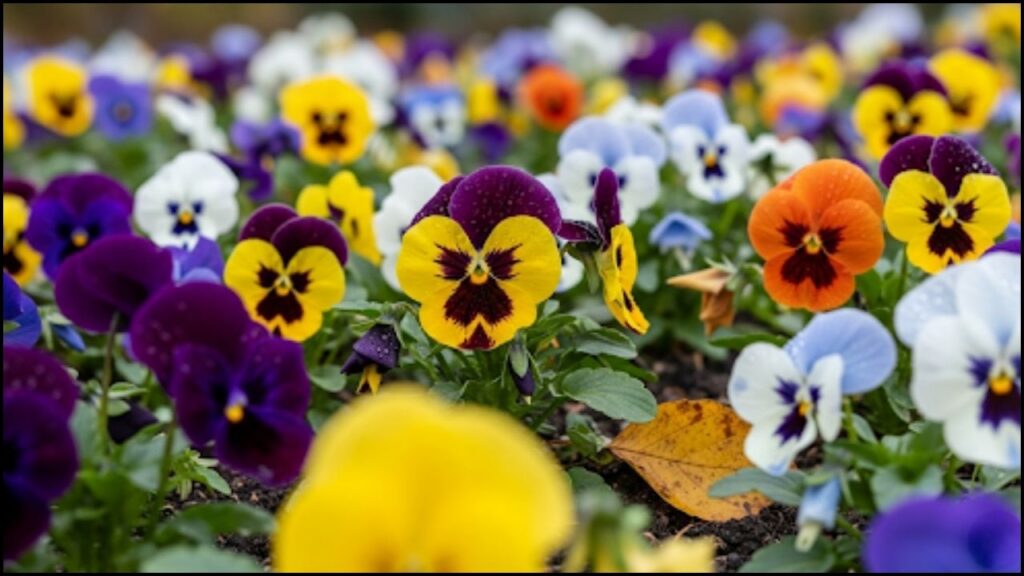
For many home gardeners, the window for planting seems to close with the arrival of summer heat. However, a range of fast-growing plants can be successfully cultivated in late summer for a vibrant and colorful autumn display, a practice known as late-season gardening. This approach extends the growing season, provides a second wave of blooms, and offers a productive way to fill out gardens and containers. According to horticultural experts, these late-season plantings can be particularly rewarding as they often require less intensive care than spring-sown varieties.
Understanding the Timing: The Science of Late-Season Planting
The success of a late-season garden hinges on selecting plants with a short maturation cycle. Most vegetables and annuals have a “days to maturity” listed on their seed packets or plant tags, which indicates the time from sowing to harvest or bloom. For a successful fall garden, gardeners should select varieties that mature within 45 to 60 days, allowing them to reach their full potential before the first frost.
Dr. Eleanor Vance, a professor of horticulture at the University of California, Davis, notes that the cooler temperatures and shorter days of late summer and early autumn can actually enhance certain plant qualities. “Many plants, particularly leafy greens and cool-season flowers, respond well to the drop in temperature,” Dr. Vance said in a recent interview. “The cooler weather can intensify the color of flowers and leaves, and it can reduce the stress that plants experience in the peak heat of summer, leading to more robust growth.”
For gardeners in regions with early frost, starting with nursery-grown seedlings rather than seeds is a strategic choice. This practice provides a head start and ensures plants have adequate time to establish roots and grow before the season changes.
Eight Reliable Plants for a Late-Season Garden
The following plants are selected for their rapid growth and ability to produce stunning visual interest in the fall.
1. Pansies and Violas
Pansies and violas are known for their cheerful, face-like flowers and resilience in cooler weather. They are an ideal choice for late-season gardening because they can tolerate light frost and will continue to bloom well into the autumn. They can be planted as small starts in late August or early September and will quickly fill out containers, window boxes, and garden beds with a burst of color.

2. Ornamental Cabbage and Kale
While not technically flowers, ornamental cabbage and kale are prized for their dramatic, rosette-shaped leaves in shades of purple, pink, and cream. These plants are exceptionally cold-hardy, and their colors often become more vibrant as temperatures drop. They are a staple of fall landscaping and provide structural interest long after other plants have faded.
3. Marigolds
Marigolds are a classic garden annual that can be sown directly in late summer. They have a relatively short time to bloom, with some varieties maturing in as little as 45 days. Marigolds are known for their bright orange and yellow flowers that hold up well against the cooler weather, providing a sunny contrast to the deepening autumn palette.
4. Celosia (Cockscomb)
Celosia, with its vibrant, feathery plumes or intricate cockscomb-like heads, offers a unique texture and a wide range of intense colors. These plants are fast-growing and produce long-lasting blooms that are excellent for both garden displays and cut flower arrangements. They thrive in full sun and well-drained soil.
5. Calendula
Also known as pot marigold, calendula is an easy-to-grow annual with cheerful orange or yellow daisy-like flowers. It is highly adaptable and can be sown directly in the garden in late summer. Calendula is resilient and can often continue to bloom even after the first light frosts, adding a touch of brightness to the garden.
6. Zinnias
Though typically associated with summer, many shorter-season zinnia varieties can be successfully sown in mid-to-late summer for a final flush of flowers. Zinnias are incredibly fast-growing and are a favorite for pollinators. Their bold, vibrant blooms can provide a showy finish to the growing season.
7. Nasturtiums
Nasturtiums are a versatile plant, valued for both their beautiful round leaves and their edible flowers in shades of yellow, orange, and red. They are quick to sprout from seed and can be grown in containers or as a groundcover. Nasturtiums prefer cooler temperatures and will thrive as the summer heat subsides.
8. Snapdragons
While some varieties can take longer, dwarf snapdragons can be planted as seedlings in late summer for fall blooms. They are known for their whimsical, spiky flowers that come in a wide range of colors. Snapdragons are cold-tolerant and can add vertical interest to garden beds and containers.
Expert Insights on Late-Season Care
Proper care is crucial for the success of a fall garden. According to the Royal Horticultural Society (RHS), the main challenges are shorter daylight hours and potential early frosts. Watering should be reduced as the weather cools, but plants should not be allowed to dry out completely. Mulching can help retain soil moisture and protect roots from sudden temperature drops.
“The key is to select varieties that are suited to your specific climate and to understand your average first frost date,” said David Miller, a master gardener and author of The Year-Round Gardener, in a recent interview. “Even if you only get a few weeks of bloom, it’s worth it. It’s a way to extend the enjoyment of your garden and to prepare for the dormancy of winter.”
|The practice of late-season gardening is gaining popularity as a sustainable and aesthetically pleasing way to maximize a garden’s potential. It transforms the end of the growing season from a decline into a new opportunity for color and life.
